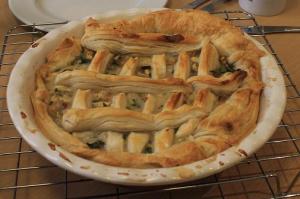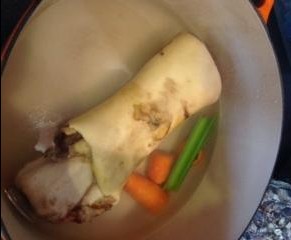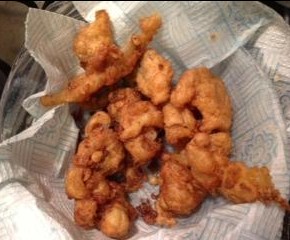We’re thrilled to have received a Very Inspiring Blogger Award for The Cookbook of Unknown Ladies!
We were nominated for the award by Karen Hammonds, who writes the wonderful Revolutionary Pie blog. Inspired by a visit to Colonial Williamsburg, she is now documenting her own mission to re-create the tastes of the 18th and 19th century in her New York apartment. Her site is beautifully illustrated and bursting with enthusiasm for food history – definitely worth a look!
The Very Inspiring Blogger Award is a way in which fellow web writers can show their appreciation for other blog sites. To accept the award, you just have to follow the following rules:
- Thank and link back to the person who nominated you
- Share 7 things about yourself
- Nominate 15 other bloggers and comment on their blogs to tell them
What a great opportunity to share a few facts about Westminster City Archives and what we do! Here goes…
7 facts about Westminster City Archives
- Westminster City Archives is a free, public service, dedicated to documenting and sharing Westminster’s rich history. Our local studies library and archive are open to everyone: you’ll find us in St Ann’s Street, a stone’s throw from Westminster Abbey
- The Cookbook of Unknown Ladies is our first foray into the blogosphere, but there are lots of ways to discover our collections online. Visit our Archives Showcase hub to explore more of our digital projects, or follow us on Facebook!
- The earliest item in our collections dates back to 1256 and the reign of King Henry III
- All of the items at the Archives help to tell the story of the development of Westminster, and we have particularly strong collections in Art & Design and West End Theatre.
- Many people visit us to trace their ancestors who lived in Westminster. Within our parish records you will also find some well-known names. Purcell, Cromwell, Byron and Constable are just a few of the famous figures you might stumble across in the Archives!
- Our Cooking Up History group members are among 30 fabulous volunteers who regularly dedicate their time to supporting the work of the Archives
- We run a busy programme events, including tours, talks and exhibitions, and give the public a behind-the-scenes look at the Archives for the annual Open House London event. You can find out what’s on by checking our Facebook page or visiting our dedicated events page
So that’s us! Now for our nominations. Being new to blogging, we’re still discovering the many fascinating sites out there, but here are a few of our favourites so far…
The Old Foodie – The author of Pie: a global history offers rich pickings for anyone interested in the history of food!
Food History Jottings – Ivan Day’s blog never fails to fascinate with its informative and entertaining articles on British culinary heritage.
History is Served – This historic foodways blog from Colonial Williamsburg is delightfully presented and a great way to discover cooking techniques from centuries gone by.
Bites of Food History – Historic recipes, step by step in words and pictures.
Westminster Walking – Few people know London as well as City of Westminster Guide Joanna Moncrieff does.
Tired of London, Tired of Life – Something to do in London every day of the year, including lots of great suggestions for history enthusiasts!
The Library Time Machine – A great blog from Royal Borough of Kensington and Chelsea’s Local Studies Library. Indepth articles along with fantastic images from their collections.
Jane Austen’s World – A bit of fun for Jane Austen fans, this lively blog covers everything Austen, and offers a good insight into life in the Regency period.
These are just a few of the blogs that have caught our eye. There are many more great sites about food heritage and London history… get Googling!




















